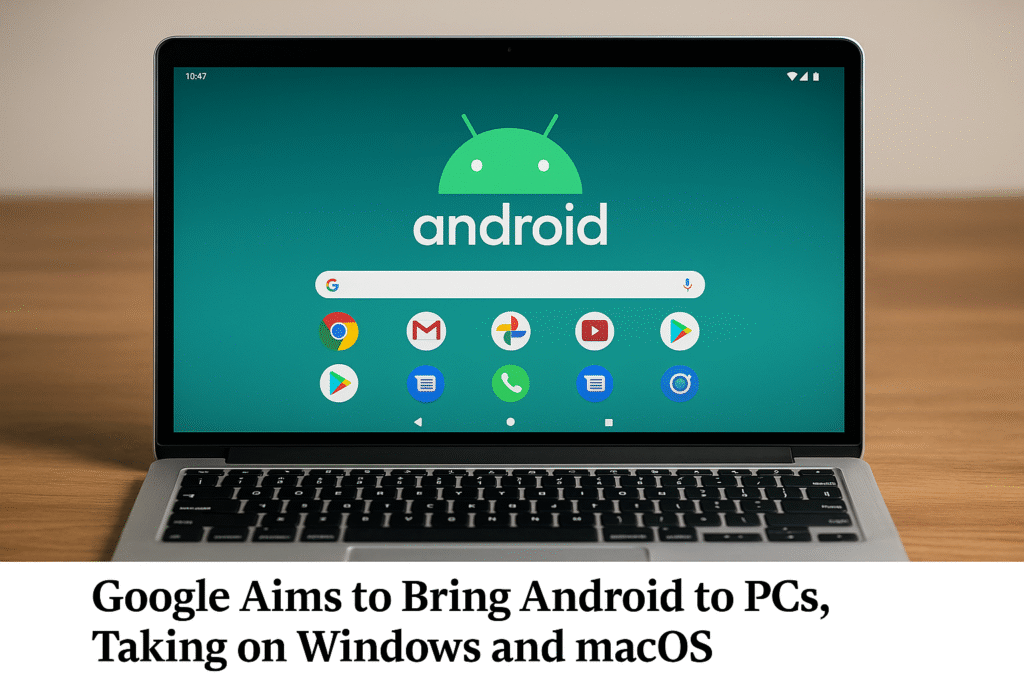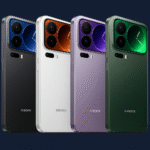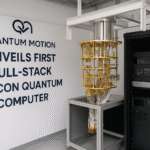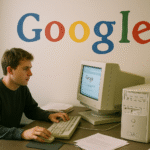By Harshit | October 8, 2025 | Mountain View
The Holy Grail of Personal Computing
For decades, tech companies have chased the dream of a single computing experience that flows seamlessly from smartphone to desktop. From early tablet experiments to hybrid operating systems, many attempts failed to deliver a consistent user experience.
In fall 2025, whispers have become reality: Google, in partnership with Qualcomm, is taking serious steps to launch Android PCs for the mainstream. Unlike Chromebooks, this initiative aims to scale the world’s dominant mobile operating system into a full-fledged laptop environment, potentially reshaping the desktop computing landscape.
This bold push could challenge Microsoft’s Windows dominance and Apple’s macOS ecosystem. But success hinges on Google learning from previous missteps in merging mobile and desktop experiences.
Learning from Windows 8
The cautionary tale of Windows 8 looms large. Microsoft attempted nearly a decade ago to shrink the desktop OS into a mobile-friendly interface, emphasizing touch controls. The results were disastrous: confusion, dissatisfaction, and limited adoption.
Two key factors contributed to Windows 8’s failure:
- The App Gap: Developers had little incentive to rebuild apps for Windows Phone, leaving users with few essential programs.
- Interface Friction: The Metro UI clashed with desktop expectations, creating a jarring user experience for those accustomed to keyboard and mouse.
Google plans to avoid these pitfalls by scaling Android upward from mobile rather than forcing desktop software downward. The strategy focuses on compatibility with existing Android apps while offering a desktop-friendly interface optimized for larger screens, keyboards, and mice.
Android PCs: What to Expect
Though Google has not yet released full details, reports indicate several defining features for Android PCs:
- Native App Compatibility: Existing Android apps will run seamlessly on desktop, providing immediate access to billions of applications.
- Cross-Device Continuity: Users can start a task on a smartphone or tablet and continue it effortlessly on their Android PC.
- Hardware Partnerships: Qualcomm’s ARM-based processors promise efficient performance, battery longevity, and speed comparable to traditional x86 laptops.
Industry analysts predict that Android PCs will especially appeal to users already embedded in Google’s ecosystem, offering a fluid bridge between mobile and desktop workflows.
The Competitive Landscape
Despite potential advantages, Google faces steep competition. Windows continues to dominate desktops worldwide, supported by a vast app ecosystem and enterprise tools. Apple maintains a loyal user base, benefiting from tightly integrated macOS and iOS devices.
However, Android PCs bring unique advantages:
- Extensive App Library: Leveraging billions of Android apps circumvents the app gap that hindered Windows 8.
- ARM Optimization: Efficient chips reduce energy consumption, potentially allowing ultra-thin, fanless designs.
- Unified User Experience: Seamless workflows across phones, tablets, and PCs could create an unmatched continuity for users.
Potential Pitfalls
Even with strategic advantages, Google faces challenges:
- User Adoption: Convincing Windows or macOS users to switch requires clear, tangible benefits.
- Marketing Clarity: Messaging must avoid confusion; Android PCs should be perceived as full desktop computers, not oversized phones.
- Enterprise Buy-In: Corporate adoption will be crucial for long-term viability, particularly in professional and educational markets.
Looking Ahead
Experts suggest Android PCs could carve a niche alongside Windows and macOS, especially among mobile-first users, students, and developers. By learning from past failures, Google may finally deliver a cohesive computing experience across devices.
If successful, Android PCs could redefine desktop computing, combining mobile fluidity, app richness, and cross-device continuity in ways previous attempts have failed to achieve. The coming months will reveal whether Google can turn this long-pursued vision into a mainstream reality.







